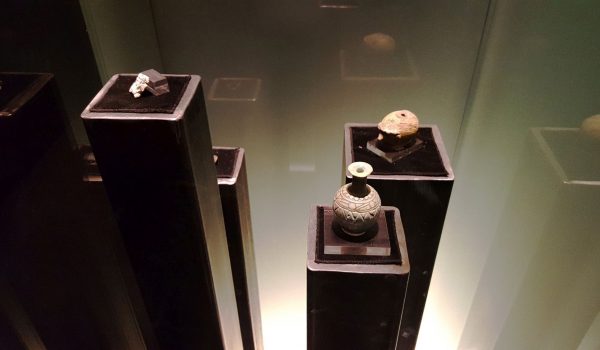‘Egypt in Pompeii’ is the title that unites the programme of three exhibition sites. It is the result of the cooperation between the Egyptian Museum of Turin, the Archaeological Site of Pompeii, and the National Archaeological Museum of Naples. The publishing company Electa provides services for the latter two.
The goal is to retrace a connection between different but also intrinsically and historically linked cultures. The Turinese museum, the Pompeian archaeological site, and the Neapolitan museum are going to launch in sequence the complex dialogue between the Egyptian finds of the Pharaonic era and those works of the Hellenistic-Republican and Imperial ages that embraced and reinterpreted the iconography. The decorative themes belonging to the art of pharaohs and the cult of Isis and of other Egyptian deities, such as Serapis, Harpocrates and Anubis, will be recognisable through the frescos, reliefs, mosaics, statues and furniture on display.
On the 5 th March 2016 at the Egyptian Museum, this exhibition will be inaugurating a new hall of roughly 600m² which will be used to house temporary exhibitions for public viewing. More than 330 pieces will be set up here, 172 of which were lent by the Archaeological Park of Pompeii and the National Archaeological Museum of Naples. Paintings, pottery and sculptures will retrace the historical intrigue between both Pharaonic art and Greek-Roman art.
The route leads through nine sections, starting with the reception of Egypt by the Greek world, moving through the Hellenization of Egyptian gods under the Ptolemaic dynasty and the spread of Egyptian gods throughout the Mediterranean countries, especially Italy. The focus is on Egyptian rituals in the sites around Mount Vesuvius, thanks to extraordinarily beautiful finds such as the frescos from both the Temple of Isis and the House of the Golden Bracelet in Pompeii, which are being displayed for the first time in Turin. The outfitting ends with a section including the magnificent bronze figures from the Industria site dedicated to the diffusion of Isiac cults in Piedmont.
The intense dialogue between the two Mediterranean shores will be further highlighted through the 3D- recreation of not only the House of Loreius Tiburtinus, which is decorated with statues reminiscent of Egypt but also the House of the Golden Bracelet in Pompeii.
In Pompeii, in the Palestra Grande, from 19 th April, a scenographic outfitting is gathering seven majestic statues of the goddess Sekhmet's lion head and the sitting statue of Pharaoh Thutmose III, which for the first time leave the rooms of the permanent collection of the Egyptian Museum. The granite monoliths lent by the Turinese museum highlight the central position of the sun cult: a return to the origins of a centuries- old story of religious syncretisms, where the worshipping of the goddess Sekhmet takes the tale of the exhibition back to the creation of the cosmos and the order imposed by the gods. The relationship between the deity and the world, as well as the necessity to maintain a balance between opposed forces, shows itself through a series of rituals, to which the majestic statues bear witness. A video installation by Studio Azzurro will enrich the display of the works with interactive content.
Moreover, inside the archaeological site, an Egyptian route will be marked starting from the Temple of Isis, where a multimedia approach of immersive reality will take place, until the arrival at the numerous domus that contain Egyptian- style decorations like that of Loreius Tiburtinus.
On 28 th June, the third chapter of the exhibition at the National Archaeological Museum of Naples is going to start. The inauguration of a new section of the permanent collections visiting route will help focus the attention on all the cults that were born in Egypt or came from the Orient through Egypt and found the region Campania to be the perfect place to settle and spread from in order to reach the rest of Italy. This part of the museum will integrate and complete the story told in the hall where the decor of the Temple of Isis in Pompeii is currently being recreated. The obsidian goblets from Stabiae are masterpieces of the Alexandrian handicraft. They have managed to convert models from the Pharaonic age into a very successful and current language in the aftermath of the Roman conquer of Egypt (31 B.C.). Two of the frescos from Herculaneum, with scenes of Isiac ceremonies that look like illustrations of Apuleius' text, finally find their place. In the exhibition of works that attest the diffusion of oriental cults and religions (from Sabazios to Dushara and Mithras) practiced and followed for centuries, there will also be references to Judaism which was present in Naples, as well as to the then forming Christianity.


